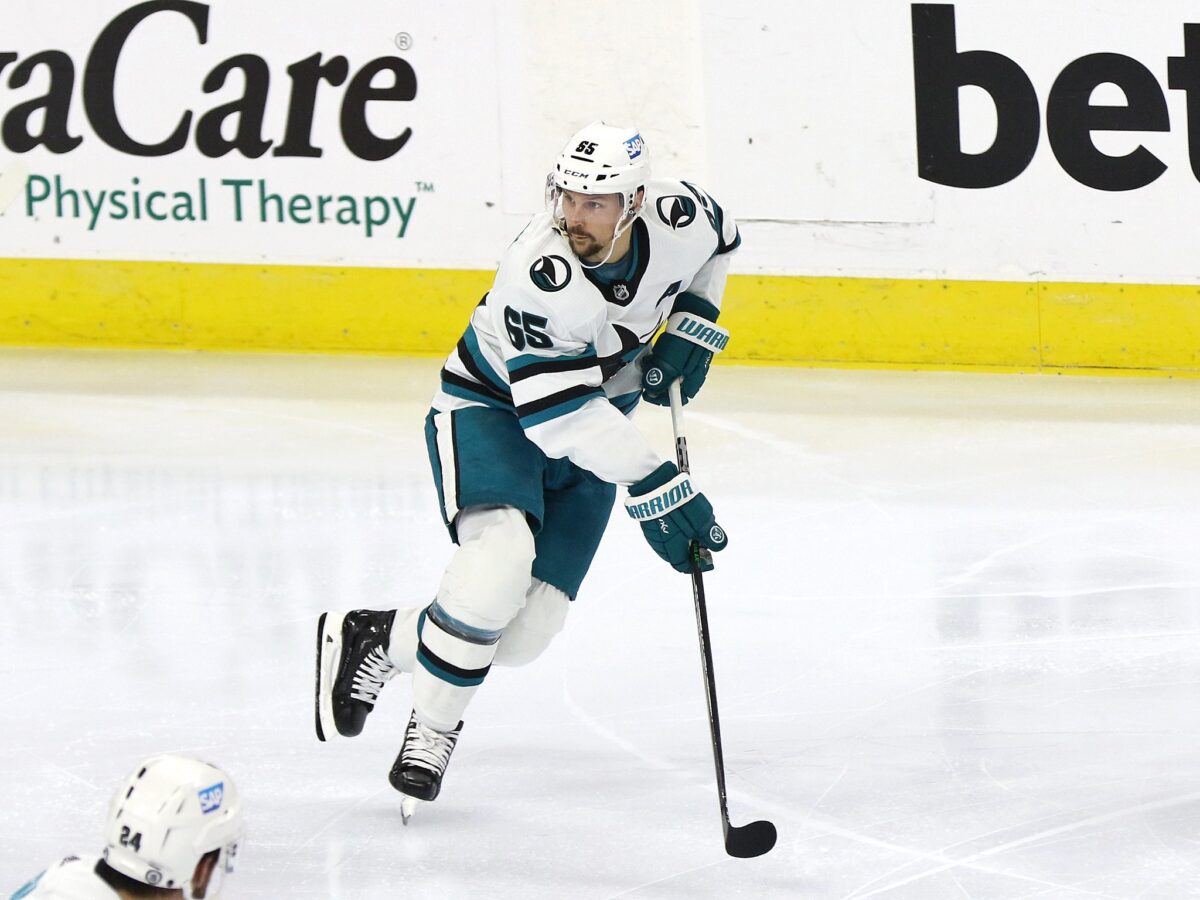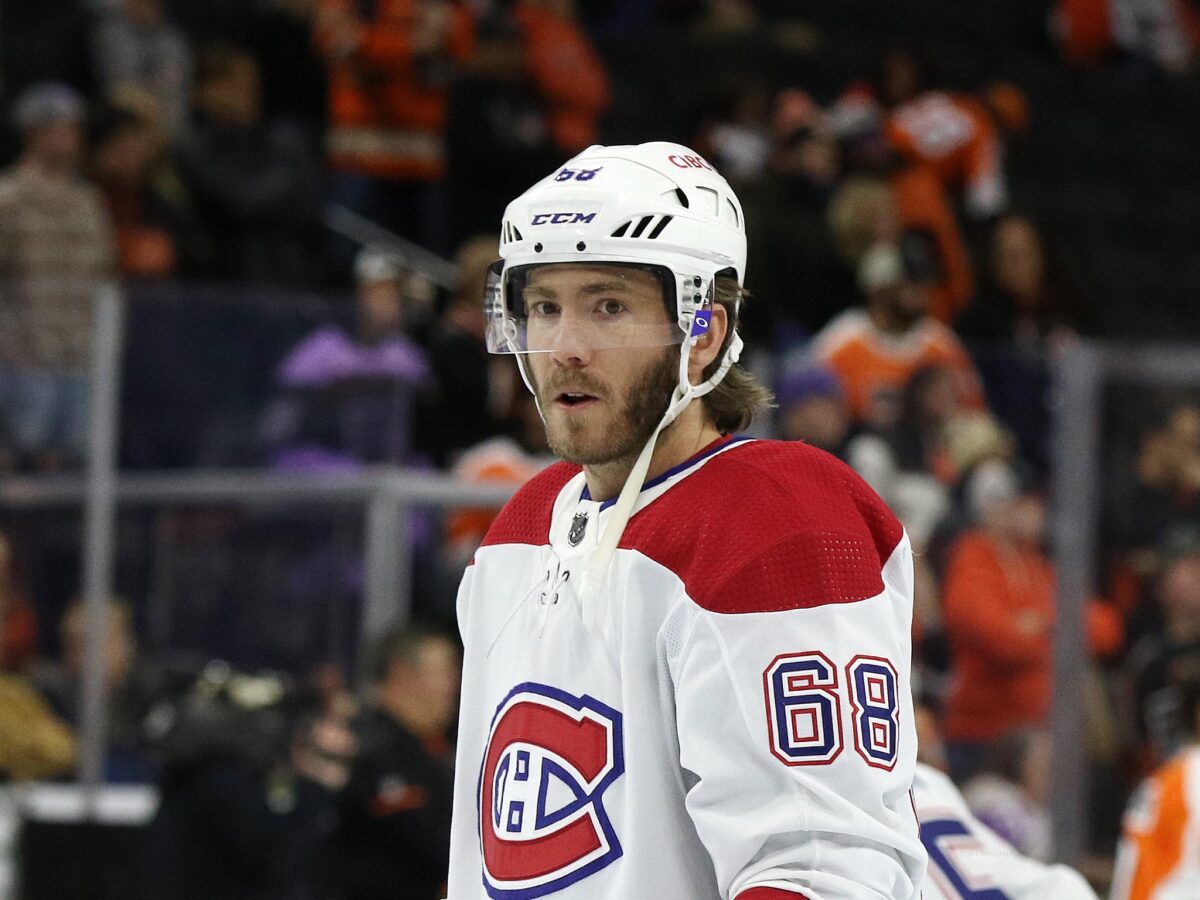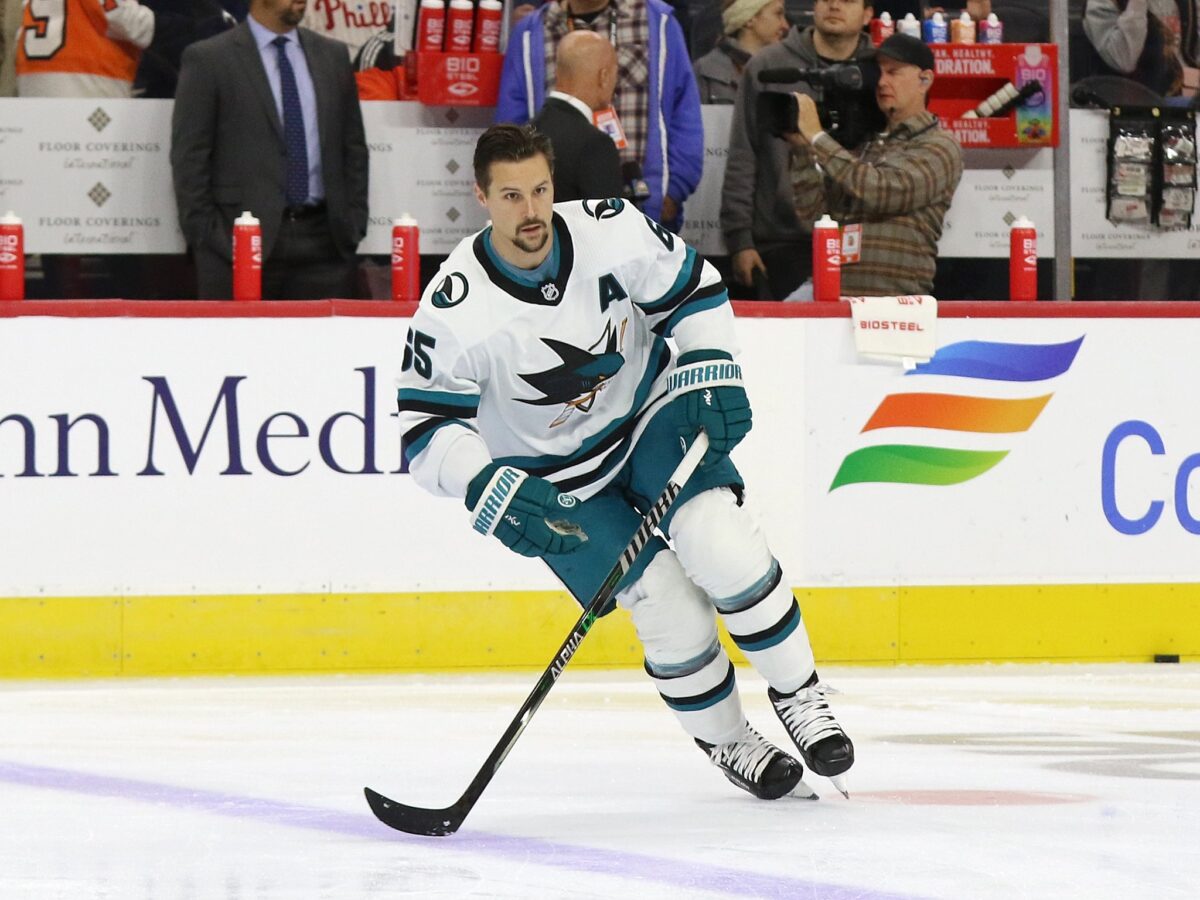Well, it finally happened. The San Jose Sharks and Pittsburgh Penguins pulled off the second blockbuster trade of the NHL offseason. For fun, they threw the Montreal Canadians into the mix, though not for the reason that much of us expected.
The Trade
To Pittsburgh:
- Erik Karlsson, RD, 33 years old
- Rem Pitlick, C, 26 years old
- Dylan Hamaliuk, LW, 22 years old (23 in October)
- 2026 third-round draft pick (from San Jose)
To San Jose:
- 2024 first-round draft pick (from Pittsburgh)
- Mikael Granlund, C/LW, 31 years old
- Mike Hoffman, RW, 33 years old
- Jan Rutta, D, 33 years old
To Montreal:
- 2025 second-round draft pick (from Pittsburgh)
- Jeff Petry, RD, 35 years old
- Casey DeSmith, G, 31 years old (turns 32 next week)
- Nathan Legare, RW, 22 years old
For the past few seasons, Penguins President of Hockey Operations and general manager Kyle Dubas has proven to be both an astute judge of trade value and someone who believes in the art of a fair deal. This is not someone who tries to rob other general managers, which is smart because that keeps his trade doors open. Value-wise, this deal is no exception, well, except for one giant exception.

Why was Montreal, or any team for that matter, involved in this deal without eating some of Karlsson’s salary? The answer, of course, is Jeff Petry.
Montreal Won the Petry Section
Let’s start with Montreal. Les Habitants did fine here. Just fine. They dealt Hoffman, who had been rumored to be on the trade block for so long that you had to think the talk was coming from inside the Bell Centre offices. He got moved for Petry, who is a known and respected entity in Montreal. Montreal also somehow got Dubas to retain $1,562,500 of Petry’s contract for the final two years of that deal. Wow, but we’ll get to that later.
The job that Martin St. Louis has done as head coach in Montreal has been excellent, and players around the league talk. Petry is likely excited to play for both St. Louis and on an up-and-coming team, hence his willingness to return to Montreal.
The Canadiens also acquired Casey DeSmith, a solid, typical NHL backup goalie who has one year left on his contract, and Nathan Legare. For anyone who thought the tired old trope that hockey writers stir up around ‘Montreal is interested in player x because he’s from Quebec’ and wants to see it disappear, this trade won’t help you there. Legare is a failing prospect who Montreal has to hope will benefit from a change of scenery. Not sure it will suddenly make him a fast enough skater to be effective at the NHL level, though, so I hope they’ve got a speed-skating coach on standby.
If This Is It? (a doo-wop)
If this is it
Please let me know
If this ain’t love
You’d better let me go
– Huey Lewis
Looking at what San Jose received for holding onto Karlsson for so long, we knew it wasn’t love. They indeed did let him go and did so for a package that is frankly both underwhelming and confusing. If $1.5 million in salary retention, a single first-round pick that is likely to be in the mid-to-late part of the round of a draft that won’t be as strong as this past June’s, two rapidly declining veterans, and one steady No. 5 defensemen was always going to be the cost for Karlsson, how did this trade take so long to happen?

It seems quite apparent that from San Jose’s perspective, the goal is to garner some re-trade value out of these three veterans. They are obviously not part of San Jose’s future. Granlund and Hoffman have zero positive value right now; to wit, both would have had a substantial cost to get rid of at this point. Rutta, in my estimation, is worth a third-round draft pick; his salary cap matches his profile on the team (it’s a touch high, but as I’ve said in the past, Stanley Cup stories in the dressing room hold additional value to upper management).
Ultimately, this feels like buying scratchers to become a millionaire – what are the odds it actually happens, and if you held Karlsson in such value, why didn’t you play the game that has real value, in this case, getting multiple first-round draft picks for the reigning Norris Trophy winner?
Dubas Drew the Wrong Line in the Sand
The extremely limited value of what San Jose received in this trade is where you can see that Dubas drew a clear line in the sand. If San Jose was not going to eat more of Karlsson’s contract, then Pittsburgh was not going to give up anything else of substantial value beyond the first-round draft pick next summer. From a technical perspective, that is a great play on Dubas’ part and a win.

Where it’s a giant loss is that not only did Dubas just commit nearly 100 percent of next year’s projected salary cap increase to Karlsson’s contract, but he also retained over $1.5 million of Petry’s deal for the next two years, which when combined with Karlsson’s $10 million cap hit, means he’s actually paying Karlsson’s roster spot slightly more ($11.5625 million) than Karlsson’s actually making next year. Wow.
Related: Pittsburgh Penguins Really Don’t Need Erik Karlsson
How did this possibly happen?
It happened because Montreal held firm that Petry had no value, and good for Montreal for winning that aspect of the deal. At $6.25 million x two years, Montreal’s perspective was likely that it’s a cost of two first-round draft picks to simply rid themselves of Petry. Dubas fell for this, and that is a loss for Dubas, as Petry was offensively valuable and played better defensively in the second half last season. Instead of paying that price, Dubas ate a substantial amount of money to drop the cost of Petry into a second-round draft pick and DeSmith.
That decision by Dubas makes it quite difficult for Pittsburgh to do anything major next summer (such as sign Auston Matthews as an unrestricted free agent) unless they rid themselves of a contract such as Reilly Smith’s. That tells me Dubas expects Matthews to re-sign in Toronto and that Dubas continues to believe in his salary cap management philosophy of committing more money to the best few players and hoping to fill out the rest of your roster with players who won’t win or lose the game for you. This didn’t work in Toronto, so Pittsburgh fans, you’ve gotta hope that your Core Four has more playoff juice in the tank than Toronto’s did.
Rem Pitlick is a classic change of scenery player: someone who has some scoring ability (36 points in 66 NHL games in 21-22, and 22 points in 18 AHL games last year) but whose defensive and overall game was seen as lacking by Montreal. Dylan Hamaliuk is this trade’s version of a general manager extracting some backup value in a risky trade, as I spoke about in last week’s article. If he ever plays at the NHL level, it will be as a fourth-line, heavy forechecking disruptor. Imagine a poor man’s Pat Maroon. He’ll need to continue to work on his skating and make up for a largely lost season last year, having only played six games in the ECHL after playing 44 games in the AHL the year prior. It’s some value, though not much.

Pittsburgh’s grade: B-. Such a weird deal to grade from their end. In terms of what they gave up acquiring Karlsson, an A or A+. In terms of salary cap management, Pittsburgh’s grade would be an F. Salary caps can always be changed with one trade, though, whereas it’s much more difficult to find yourself in possession of the best offensive defenseman of a generation. Karlsson can still get it done and if healthy, makes Pittsburgh a more dangerous team this upcoming season.
